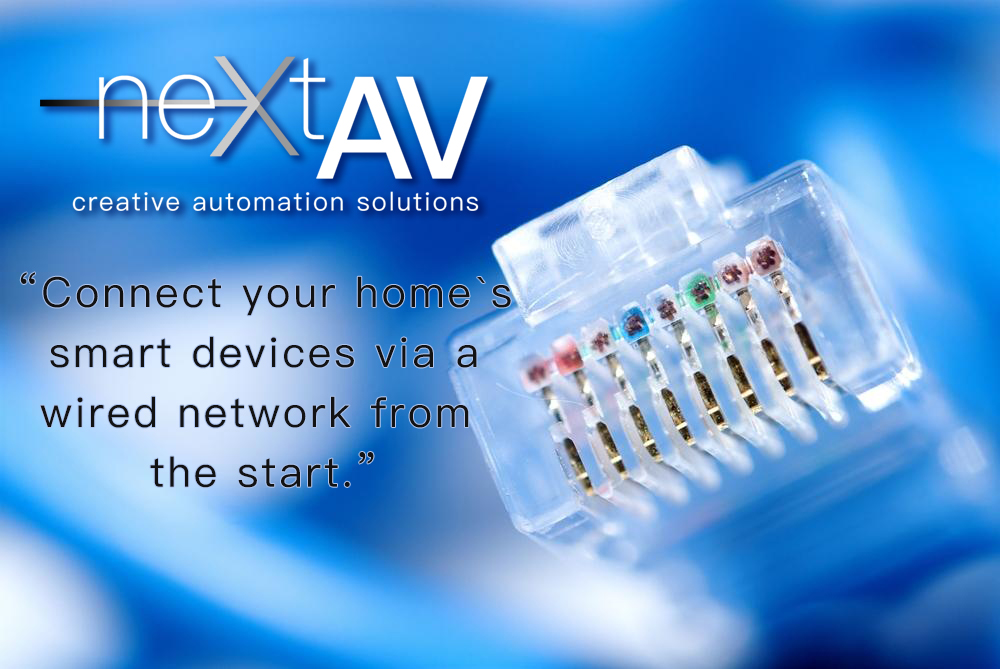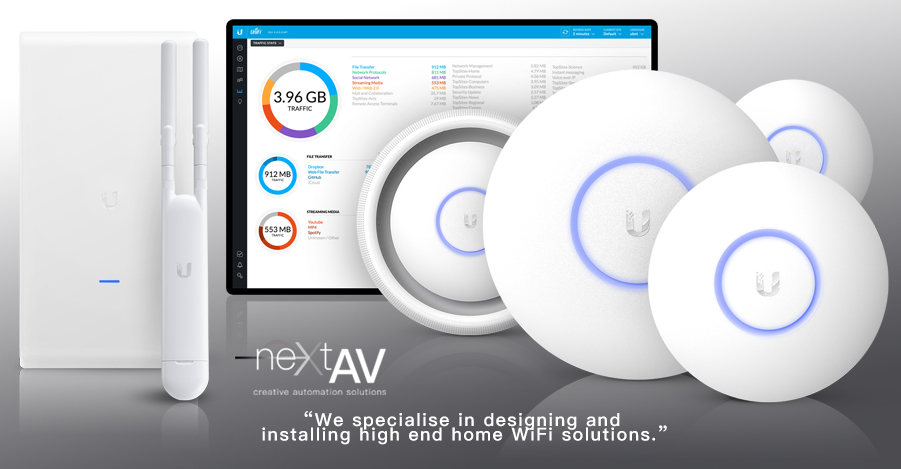 We wire your property for your networkToday’s average home has a plethora of connected devices. And all smart home products, such as laptops, smartphones, TVs, electronic door locks, and thermostats, require a solid, reliable networking infrastructure to function at their full potential.
We wire your property for your networkToday’s average home has a plethora of connected devices. And all smart home products, such as laptops, smartphones, TVs, electronic door locks, and thermostats, require a solid, reliable networking infrastructure to function at their full potential.
Most home networks are usually comprised of an Internet connection to the house, which links to a wireless router with which everything else—smartphones, smart light switches, surveillance cameras—communicates. This setup functions adequately when the only products connected to the router are laptops and Xbox gaming systems. Today, in many households these legacy devices have been joined by a new generation of connected devices, including media streamers, home automation hubs, cloud storage services, security systems, and other products which the industry has come to refer to as the “Internet of Things,” or “IoT.” As the number of IoT devices on a home network increases, it becomes increasingly more difficult for the network to function well. Problems such as buffering in video streams, latency in music streams, and signals that don’t reach their intended destinations can result.
Think of your home’s network like a highway system.
A wired network is a multilane highway. Multiple cars can have their own lane and travel at the speeds they want without impacting others. Not so with Wi-Fi. It’s like a two-lane highway. The slowest device dictates the speed of all the others.
Wi-Fi can be finicky so, whenever possible, connect your home’s smart devices via a wired network from the start, especially in the TV room and Study.
You must Install a Good Wiring Backbone
A connected smart home generally starts with an incoming cable, fiber, or standard phone line (DSL). This wire connects to a modem and that connects to a router (or combined modem/router) which has Wi-Fi capability. Where that wire enters your home is important. If it comes in far from the central part of your house, like a deep corner of the basement or at the far end of a guest wing, latching on to that Wi-Fi signal is going to be difficult for devices located far from the router.
Once the wiring is done you need to connect the rest of your property with WiFi.
 We prefer high-end Products like Ubiquiti
We prefer high-end Products like Ubiquiti






